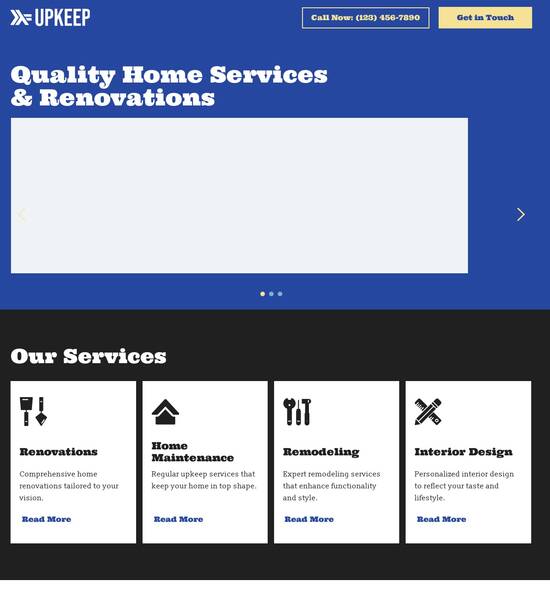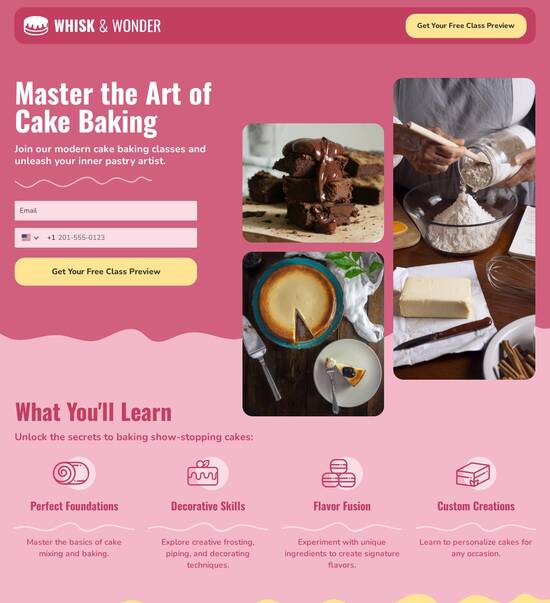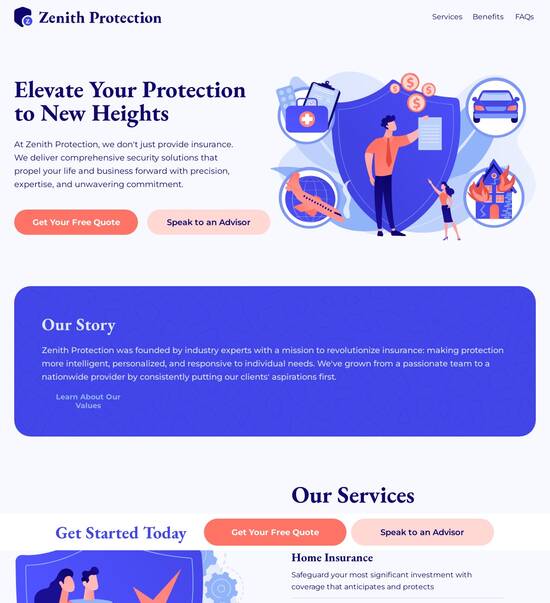
Basic product page templates
Use TemplateAbout template
Use basic product page templates and stay true to your brand identity. Resonate with your audience today.
Recommended templates

Easy to build without coding
With the intuitive drag-and-drop builder, anyone on your team can create high-converting pages without any knowledge of code or design. Make enhancements to your landing page with custom widgets using Javascript, HTML/CSS, or third-party scripts.

Multiple layouts for any industry and goal
Select from 500+ landing page layouts built to boost conversions across industry-specific scenarios. Customize them by adjusting fonts, adding images, and generating on-brand content with the AI assistant. Quickly scale with Instablocks® and Global Blocks that you can save, reuse, and update globally.

Loads fast and looks polished on any device
Every template is responsive, which means they present professionally on any device and load blazingly fast with our Thor Render Engine. You can also power them up with Google AMP technology to deliver an unparalleled mobile experience and drive higher conversions.

Robust analytics & experimentation
Get real-time updates and reporting across all your devices, showing the number of visitors, conversions, cost-per-visitor, and cost-per-lead. Launch AI-powered experiments, run A/B tests, and use heatmaps to analyze user behavior, then optimize your landing page to maximize conversions.







Easy to build without coding
With the intuitive drag-and-drop builder, anyone on your team can create high-converting pages without any knowledge of code or design. Make enhancements to your landing page with custom widgets using Javascript, HTML/CSS, or third-party scripts.
Multiple layouts for any industry and goal
Select from 500+ landing page layouts built to boost conversions across industry-specific scenarios. Customize them by adjusting fonts, adding images, and generating on-brand content with the AI assistant. Quickly scale with Instablocks® and Global Blocks that you can save, reuse, and update globally.
Loads fast and looks polished on any device
Every template is responsive, which means they present professionally on any device and load blazingly fast with our Thor Render Engine.
Robust analytics & experimentation
Get real-time updates and reporting across all your devices, showing the number of visitors, conversions, cost-per-visitor, and cost-per-lead. Launch AI-powered experiments, run A/B tests, and use heatmaps to analyze user behavior, then optimize your landing page to maximize conversions.
All the features you need to build product page design template
Explore more featuresLearn how to build ecommerce product detail page template
Frequently asked questions about product detail page template
Leading the way in building high-performing landing pages





Product detail page design html: Your ultimate how-to guide
Creating high-converting landing pages is essential for optimizing your digital marketing efforts. Instapage, the leading landing page and conversion rate optimization platform in the USA, provides powerful tools to help you design, test, and personalize your campaigns, ensuring you achieve maximum ROI. This guide will walk you through the key features of Instapage and methodologies that can elevate your marketing strategies.
Understanding Instapage's template library
Instapage offers over 100 ready-to-use, high-converting templates. These templates are designed to streamline the process of capturing leads and driving results for various sectors such as business services, education, and tech/SaaS. Utilizing this extensive library allows marketers to launch campaigns swiftly without needing extensive design skills.
- Diverse designs: Choose from layouts tailored for different industries to resonate with your audience.
- Ease of customization: Modify designs using intuitive builders, ensuring they meet your specific needs.
- Lead generation focus: Templates optimized for conversions provide a strong starting point for effective marketing.
Steps to building landing pages with Instapage
Building effective landing pages with Instapage can be broken down into clear steps that prioritize your users’ experiences.
- Select a template: Choose a design that aligns with your campaign goals, focusing on elements that facilitate lead capture.
- Customize your content: Use dynamic text replacement and personalized content strategies to cater to specific audience segments and improve engagement.
- Launch your page: After thorough testing, utilize collaboration features to get feedback and finalize your page quickly.
Optimizing your landing page for conversions
Optimization for conversions is crucial in ensuring your landing pages perform well. Leveraging built-in experimentation features will help you refine your strategies.
- Utilize heatmaps: Gain insights into user behavior to fine-tune your layout and content placement.
- Conduct A/B tests: Experiment with different headlines, images, or call-to-action buttons to determine the most effective combination.
- Analyze performance metrics: Consistently review your analytics dashboard to track and assess your campaign's success.
By following these steps, marketers can effectively utilize Instapage's powerful functionalities to enhance campaign performance. The platform not only allows for rapid testing and modification of landing pages but also supports continuous improvement through data-driven insights.
Take advantage of Instapage to streamline your landing page creation and optimize your digital marketing strategies. Begin exploring today to unlock your campaign’s potential!
Ready to enhance your marketing efforts? Explore Instapage's powerful tools and transform your landing page practices today!
People also ask about product details page template html css
The anatomy of a basic product page template: Crafting the perfect ecommerce experience
Understanding the core structure of a product page
A product page is the heart of an ecommerce website; it’s where potential customers learn about specific products and make purchasing decisions. Effective product pages significantly impact sales by providing all necessary information in a user-friendly format. These pages serve as critical landing spots, guiding users toward a purchase through compelling content and design.
Within the broader context of landing pages, product pages serve a more specialized function. They are tailored to showcase products in a way that not only attracts attention but also drives conversions, combining elements of marketing with essential product information. The challenge lies in balancing aesthetics with functionality, ensuring that every visitor leaves with the information they need.
Essential elements of a basic product page template
To achieve that balance, a basic product page template should include several key components that enhance user experience and echo brand identity. Let's break these components down:
Product title: The product title is crucial not only for user clarity but also for SEO. A well-optimized title can increase visibility in search engines.
Product images: High-quality, clear images are vital. Employing multiple views and possibly 360-degree images can let users visualize the product better, while utilizing lightbox functionality enhances interaction.
Product description: Effective product descriptions strike a balance between informative and persuasive. Structured descriptions should outline benefits, features, and practical use cases.
Pricing information: Clearly displaying pricing, along with any discounts or bulk purchase options, can incentivize buyers. Consider including stock alerts to create a sense of urgency.
Call to action buttons: These should be strategically placed and compelling. Their wording must encourage user engagement, guiding shoppers toward their next actions.
Innovative functionalities of product page templates
Incorporating innovative functionalities can significantly enhance the user experience on product pages. One such feature is dynamic content loading. By utilizing the DOMContentLoaded event, developers can improve page speed and update content seamlessly without full page reloads.
This technique greatly reduces bounce rates, as a faster loading experience can keep users engaged. Furthermore, integrating interactive elements can transform a static page into an engaging experience. For example, using tabbed content for product specifications allows users to find information faster. Additionally, reviews and ratings should be prominently displayed, providing social proof and building trust.
Another essential consideration is mobile responsiveness. Given the prevalence of mobile shopping, it is critical that product pages are adaptable to various screen sizes. Key design principles include touch-friendly elements, readable fonts, and spacious layouts to ensure users have a seamless shopping experience.
Tailoring your product page for ecommerce success
The design of a product page should not only focus on functionality but also on aesthetics. Color schemes and typography play a significant role in enhancing visual appeal. For instance, using contrasting colors to highlight important features like the price or CTA can draw attention and guide the user’s journey.
Moreover, leveraging white space effectively is essential for focusing user attention on key elements of the page. It prevents clutter and allows for a clean overview of product information, making navigation effortless.
Utilizing ecommerce website templates can streamline the process of creating effective product pages. Many popular ecommerce platforms offer pre-designed templates that are optimized for conversions, which can save time and resources. However, businesses must weigh the benefits of these templates against the need for unique branding, as custom designs can provide a more tailored user experience.
In addition, SEO best practices form an integral part of any successful product page. A well-researched keyword strategy should inform the choice of product titles, descriptions, and metadata. Alt text for images is also essential, enhancing visibility in search engines and contributing positively to overall SEO efforts.
Enhancements and additions for optimized product pages
To further enhance product pages, incorporating user-generated content is invaluable. Customer reviews and testimonials boost credibility, while customer-uploaded photos can provide authentic visuals of products in use. Encouraging satisfied customers to share their experiences not only builds community but also adds rich, relatable content to the page.
Integrating social proof, such as trust badges or secure payment symbols, can also reassure potential buyers. Display limited-time offers or promotions to create urgency, motivating users to complete their purchases before missing out.
For those looking to maximize conversions, employing advanced features like product recommendations is key. Showing related products encourages customers to explore further. A/B testing is another strategy that can yield valuable insights, allowing businesses to fine-tune their page performance based on user interaction data.
Creating a cohesive user journey: From home page to product page
A seamless user experience is crucial for retaining customers and ensuring easy navigation throughout the website. This begins with a logical homepage structure that directs users to product pages. Clear categorizations allow customers to find products quickly, while strategically placed links and buttons facilitate smooth transitions.
Linking related content, such as blog posts that delve deeper into product usage or benefits, can enhance customer engagement. This strategy encourages users to stay longer on the site, improving SEO through internal linking and providing them with a more comprehensive understanding of the products.
Real-world applications: Case studies of successful product pages
Analyzing leading ecommerce websites can uncover best practices that can be adopted. For instance, many industry leaders utilize compelling product storytelling that resonates with their target audience. They strategically highlight product benefits, which has proven effective in increasing conversion rates.
In addition, examining before-and-after transformations of product pages can provide insights into what changes lead to quantifiable results. By making straightforward adjustments—like improving images or restructuring information—businesses can see significant boosts in consumer engagement and sales.
Future trends in product page design
Emerging technologies are set to revolutionize product pages. For example, incorporating augmented reality (AR) technology allows users to visualize products in their actual environment, enhancing the decision-making process. AI-driven recommendations can also provide personalized shopping experiences, guiding users towards products aligned with their browsing and purchase history.
Sustainable design practices are becoming increasingly relevant to consumers. Showcasing eco-friendly themes or highlighting the sustainable aspects of products can attract environmentally conscious shoppers and directly impact buyer behavior.
Final thoughts on maximizing product page potential
To keep your product pages continually optimized, it's essential to adopt innovative tactics for ongoing improvement. Regular audits of page performance allow marketers to identify areas where user experience can be enhanced, ensuring that the pages evolve based on feedback and data.
Moreover, creating a feedback loop by actively encouraging customer engagement helps build a vibrant community around the brand. Utilizing this feedback to refine product offerings and website structure can foster trust and loyalty, paving the way for sustained success in the competitive ecommerce landscape.
Ready to skyrocket conversions?
Supercharge your ad campaigns with high-performing landing pages
Get started














